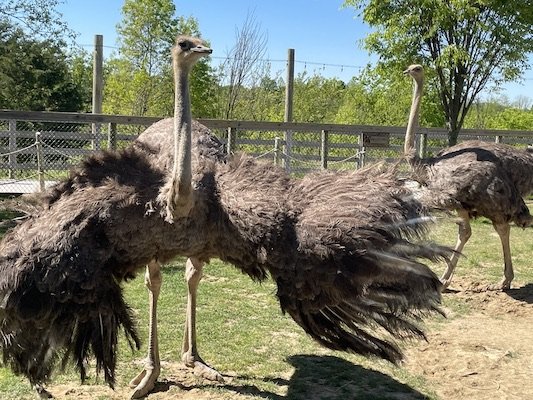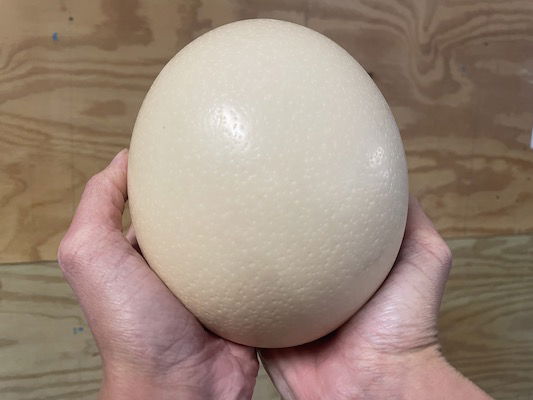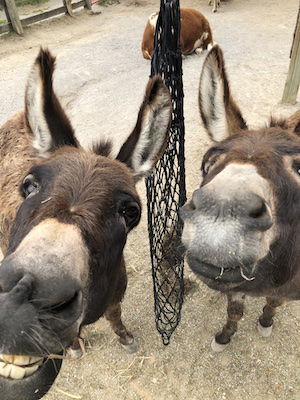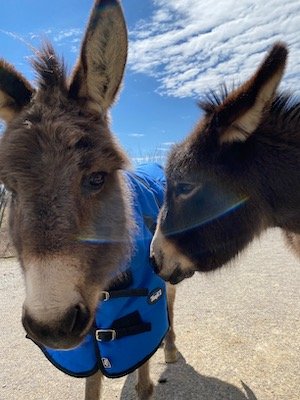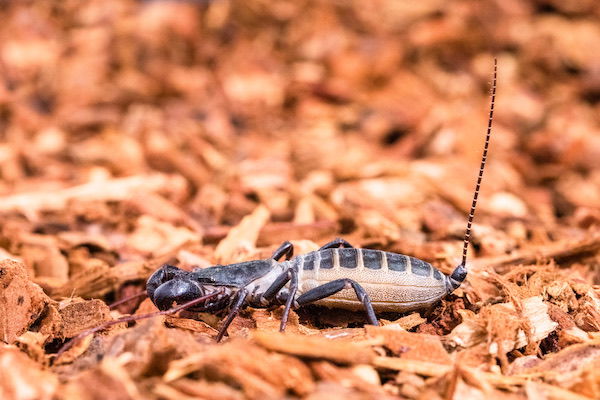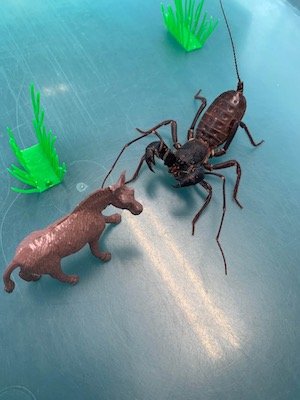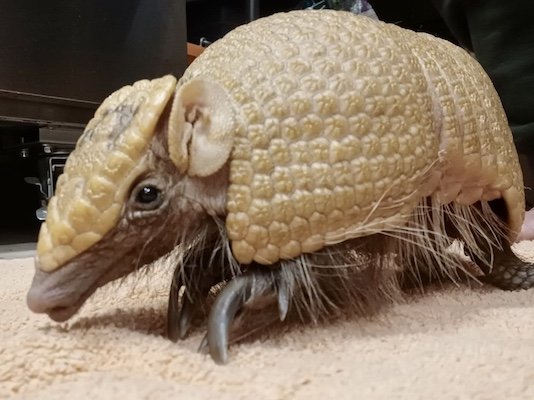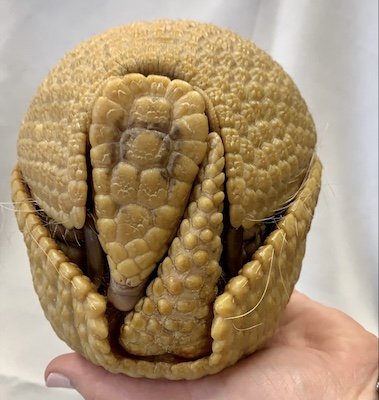Spring has Sprung
Spring has sprung at the Ararat Ridge Zoo, and that means lots of babies—Philippine leaf insect babies, to be exact! These camouflaged critters only live about six to nine months, so all our adults passed away of old age over the winter, but not before laying lots of eggs! We have a rotating colony, so new insects hatch every spring. We currently have about 100 babies!
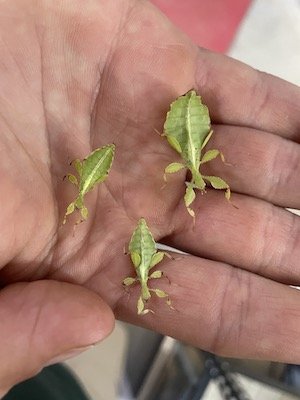
Baby Philippine Leaf Insects
Speaking of eggs, spring is the season our two female ostriches, Jezreel and Elah, begin laying their eggs! Did you know ostrich eggs are the largest eggs in the world? Each ostrich egg is five inches wide, weighs three pounds, and is equivalent to 24 chicken eggs! Since we don’t have any male ostriches, the eggs don’t have babies inside. Our ladies lay eggs every few days from February through August.
Our two zoos also swapped miniature donkeys! Sheba and Jezebel moved to the Creation Museum, while Vashti and her daughter Athaliah returned to the Ark Encounter. Sheba and Jezebel have health issues that prevent them from living on grass. When the Ark’s new Children’s Zoo opens this summer, the donkey exhibit will be more suited to Vashti and Athaliah. Athaliah was born at the Ark just two weeks after it opened on July 7, 2016!
Over at the Eden Zoo, we welcomed two new faces! It was time for our elderly giant vinegaroon, Cuddles, to retire from programs, so zookeepers threw him a retirement party! Giant vinegaroons are arachnids (ah-RAK-nids), eight-legged animals without backbones. They get their names because they shoot “vinegar” out of their abdomens to scare away predators. After Cuddles’ retirement, zoo staff adopted a much larger replacement—a female named Apple (after apple cider vinegar). Females are much larger than males, and Apple is extremely friendly! She loves to explore her environment and interact with people.
If eight-legged critters aren’t your favorite, have no fear—the Creation Museum also gained an adorable four-legged friend! Meet Boulder, the southern three-banded armadillo! At only seven months old at his arrival, he’s growing fast, already larger than our seven-year-old female, Pebbles, at the Ark Encounter. Three-banded armadillos are the only type of armadillos that can completely curl into a ball. This ability is called volvation (vol-VAY-shun), and they’re so strong that nothing can uncurl them. Armadillo means “little armored thing” and refers to the bony plates covered in keratin (care-AH-tin, the same substance in your hair and nails) that protect them from harm down in South America. This armor is so tough that no predator can break through it except one—the jaguar. That’s because jaguars have one of the top five strongest bite forces in the animal kingdom—about 1,500 pounds per square inch (psi). Human bite forces average a measly 150 psi, meaning the jaguar is 10 times stronger! However, armadillos have another secret weapon—they’re great swimmers. To escape threats, they can run to the nearest water, dive in, sink to the bottom, and hold their breath for up to six minutes! Or they can inflate their stomach and intestines with air and simply float across the surface!
Boulder has very long claws, which are used to dig or tear open rotten logs and termite mounds to find food. He also walks on his tippy toes, so he needs them to stay long. The zoo staff plans to breed Pebbles and Boulder once he settles into his new home. This species is threatened in the wild due to habitat destruction and overhunting. However, they are solitary animals, so Pebbles and Boulder live at separate zoos so they can have their own space.
Stay tuned for future baby news!
- © 2025 Answers in Genesis
- Privacy Policy
- Contact
- About

